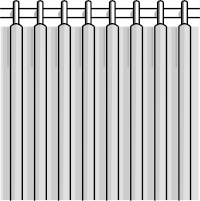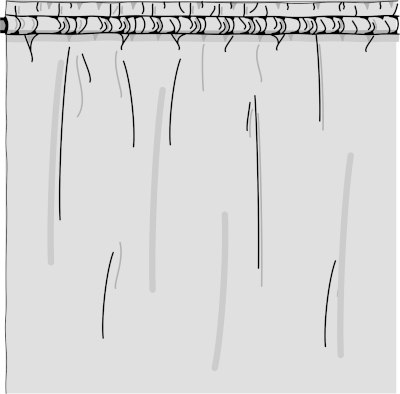34cm
Showing all 4 results
Login
Register
No products in the basket.
Family run since 1964
Traditional Craftsmanship
Bespoke Services
Showing all 4 results
| Cookie | Duration | Description |
|---|---|---|
| cookielawinfo-checkbox-analytics | 11 months | This cookie is set by GDPR Cookie Consent plugin. The cookie is used to store the user consent for the cookies in the category "Analytics". |
| cookielawinfo-checkbox-functional | 11 months | The cookie is set by GDPR cookie consent to record the user consent for the cookies in the category "Functional". |
| cookielawinfo-checkbox-necessary | 11 months | This cookie is set by GDPR Cookie Consent plugin. The cookies is used to store the user consent for the cookies in the category "Necessary". |
| cookielawinfo-checkbox-others | 11 months | This cookie is set by GDPR Cookie Consent plugin. The cookie is used to store the user consent for the cookies in the category "Other. |
| cookielawinfo-checkbox-performance | 11 months | This cookie is set by GDPR Cookie Consent plugin. The cookie is used to store the user consent for the cookies in the category "Performance". |
| viewed_cookie_policy | 11 months | The cookie is set by the GDPR Cookie Consent plugin and is used to store whether or not user has consented to the use of cookies. It does not store any personal data. |
Non Fabric Gifts: £4.00
Standard Delivery (Folded Remnants): £6.00
Standard Delivery (Fabrics Folded): £8.00
All fabric is shipped folded, rolled fabrics price on request.
Please contact us to enquire whether delivery can be made to an address outside the mainland UK and the cost of doing so.
Delivery will be made as soon as possible after your order is accepted, please allow 7 – 10 working days for receipt of your order. Please advise us when placing your order if you are working to a deadline. Express delivery can usually be arranged at an additional charge if required. Please note, all delivery times are approximate, and we will not be held liable for any compensation as a result of any unexpected delays.
If you are measuring up for blinds it’s important to get the correct dimensions to avoid costly mistakes. If we are making bespoke blinds for you then we can visit your home or business to take accurate measurements.
Roman Blinds outside the reveal:
As a guide, and subject to any restrictions or personal preferences, blinds being fitted outside the reveal are fitted 10cm or 4 inches above the reveal and finish 10cm or 4 inches below the sill, likewise they are 10cm or 4 inches wider each side of the reveal.
Therefore, we need two measurements only:
Please insure you blind will fall clear of your window sill, and if not, it will need to finish at the sill.

Roman Blinds inside the reveal:
Blinds being fitted inside the reveal need more measurements to be taken.
First take the width measurement. Measure at the top, in the middle and at the bottom of the reveal (there may be tiles fitted at this bottom measurement if you are in a kitchen or bathroom window). Note all 3 measurements and we will make our allowance for the finish width of your blind.
Next take the length measurement. Measure at both sides and in the middle, to be sure we have all the information to make your blind to the correct length.
Please ensure your blind will fall clear of any restrictions within your reveal e.g. window furniture.


When measuring up for curtains it’s important to get the correct dimensions to avoid costly mistakes. If we are making bespoke curtains for you then we can visit your home or business to take accurate measurements.
1. First measure the width of the pole between the finials. We do not require the finial measurement and will make our own allowances for ‘creep-back’ based on this one measurement.


2. Next count the number of rings. Rings can be removed if there are too many, but may present a problem if more are required.
3. Finally measure from the underside of the ring/top of the metal eyelet that the hook sits in to the required finished length you wish the curtains to be. See note below if eyelet headings are required.


There is no fixed rule on the length you wish your curtains to be, and restrictions may determine the finished drop.
Usual lengths are:
Floor length curtains have a few options and most preferences are:
If you require a ‘stand-up’ heading please still measure the curtain length as detailed above and advise separately how much above the tape you require.
If you require eyelet headings however, please take your curtain length measurement from the top of your pole and also note your pole diameter, we will make the allowance above this length to allow for the eyelets.
Please note, this is a generic measuring guide and there will always be windows that need a more bespoke approach so please contact us if you need more information.
When measuring up for curtains it’s important to get the correct dimensions to avoid costly mistakes. If we are making bespoke curtains for you then we can visit your home or business to take accurate measurements..
1. Three width measurements are required if applicable:
A. First measure the width of the rail. We will make our own allowances for ‘creep-back’ based on this one measurement.


B. Next, if the rail is corded, take the measurement from the right hand end of the rail across to the centre and include the overarm bracket in the measurement, check the left hand side through to the centre including the overarm bracket is the same measurement. It may not be and we will need both measurements separately.


C. Finally, if you require a return on your curtains (from the end of the rail back to the wall), please take this measurement separately. Check that you have a way of fixing the final curtain hook via the rail bracket itself or with a separate screw eye fitted to the wall.


2. Count the number of runners. Runners can be removed if there are too many, but may present a problem if more are required.
3. Measure from the top of the rail to the required finished length you wish the curtains to be.
There is no fixed rule on the length you wish your curtains to be, and restrictions may determine the finished drop.
Usual lengths are:
Floor length curtains have a few options and most preferences are:
If you require a ‘stand-up’ heading please still measure the curtain length as detailed above and advise separately how much above the top of the rail you require.
Please note, this is a generic measuring guide and there will always be windows that need a more bespoke approach so please contact us if you need more information.
There are a variety of heading styles, both modern and traditional, and the style you select is as important a part of your finished window treatment as the fabric selection itself.


A traditional option is the triple pinch pleat heading which is also known as French pleats and gives a beautiful tailored finish.


A more modern twist to the triple pinch pleat is the double pinch pleat which is now equally as popular.


This heading style is made the same way at a triple pinch pleat heading, but only the bottom of the pleat is sewn into place. Instead of sewing in the top of the pleat it is opened out and filled to keep its shape.


This is a contemporary adaptation of the goblet heading and as such the bottom of the pleat is not stitched at all. The pleat is filled, as with the goblet heading, but naturally forms a cylinder that runs through to the main curtain itself.


Also known as a Box Pleat heading, this is a more contemporary curtain heading where the pleats are placed at the back of the curtain, creating a wall of fabric at the front. The pleat at the back can then remain backwards facing if hanging from a pole or can be squashed flat and machined down the trough for a more tailored look.


This is where two stitch lines are made across the curtain below the top edge to form a pocket and the curtain is slid onto the rail between the stitch lines creating a frilled stand up above the rail. This is most commonly used on Dormer or Swing Arms to conceal the rail.


Getting their name from the large metal rings inserted into the headings, eyelet curtains are hung directly onto the pole. It is worth bearing in mind that this style of heading needs dressing in every time they are closed as they have no pre-formed method for this.


This simple heading style allows the maximum coverage from a width of fabric and is ideal for windows or doors that have no space for a more traditional curtain fullness or if this project has a restricted budget. The tube can be forward or reverse facing if hanging from a pole and forward facing only if hanging on a rail.




